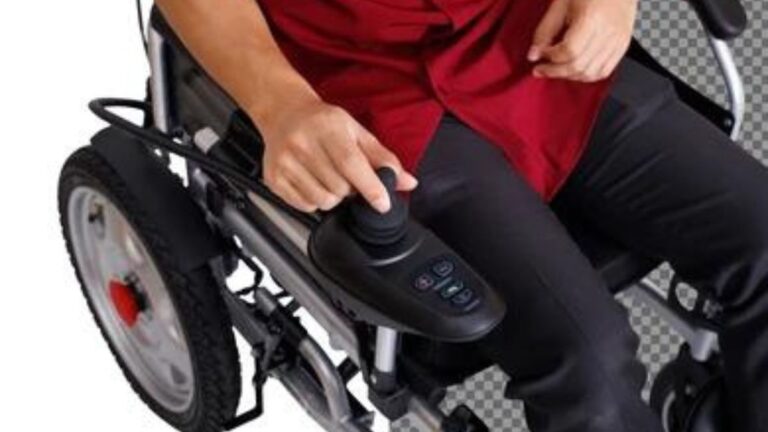Electric wheelchairs offer freedom and independence to many individuals with mobility challenges. To keep an electric wheelchair in top condition and ensure it operates safely and efficiently, regular maintenance and care are essential. This guide provides easy-to-follow steps for maintaining and caring for an electric wheelchair.
1. Regular Cleaning
Regular cleaning is crucial for maintaining the appearance and functionality of an electric wheelchair. Dust, dirt, and debris can accumulate on the wheelchair, potentially causing damage or impairing its operation.
- Wipe Down the Frame: Use a damp cloth to wipe down the frame. Avoid using harsh chemicals that can damage the paint or finish.
- Clean the Upholstery: Use a mild soap solution and a cloth to clean the seat and backrest. Make sure to dry it thoroughly to prevent mold and mildew.
- Check the Wheels: Remove any debris from the wheels and casters. Use a brush to clean the treads, ensuring smooth operation on various surfaces.
2. Battery Maintenance
The battery is the lifeblood of an electric wheelchair. Proper battery maintenance ensures the wheelchair remains reliable and extends the battery’s lifespan.
- Regular Charging: Charge the battery daily, even if the wheelchair has not been used extensively. This prevents the battery from discharging completely, which can reduce its lifespan.
- Inspect for Damage: Regularly check the battery for any signs of damage or corrosion. Clean the terminals if necessary and ensure they are securely connected.
- Store Properly: If the wheelchair will not be used for an extended period, store the battery in a cool, dry place and charge it every few weeks to maintain its health.
3. Tire Care
Tires play a critical role in the performance and safety of an electric wheelchair. Keeping them in good condition ensures a smooth and safe ride.
- Check Tire Pressure: Regularly check the air pressure in pneumatic tires. Refer to the manufacturer’s guidelines for the recommended pressure levels.
- Inspect for Wear and Tear: Look for signs of wear, cracks, or punctures in both pneumatic and solid tires. Replace any damaged tires promptly to avoid accidents.
- Rotate Tires: If the wheelchair has pneumatic tires, rotate them regularly to ensure even wear.
4. Routine Mechanical Checks
Routine mechanical checks help identify and fix potential issues before they become major problems.
- Inspect the Frame and Joints: Look for any signs of wear, cracks, or loose bolts in the frame and joints. Tighten any loose screws or bolts and replace any damaged parts.
- Test the Brakes: Ensure that the brakes are functioning properly. Test both the manual and electronic brakes to confirm they engage and release correctly.
- Check the Motors: Listen for any unusual noises from the motors. Unusual sounds can indicate mechanical issues that may need professional attention.
5. Control System Maintenance
The control system, including the joystick and other electronic components, requires regular attention to ensure smooth operation.
- Keep Controls Clean: Use a soft, dry cloth to clean the joystick and control panel. Avoid using water or cleaning agents that could damage the electronics.
- Check Connections: Regularly inspect the connections between the control system and the motors. Ensure all plugs are secure and free from damage or corrosion.
- Update Software: If your wheelchair has software updates, make sure they are installed as recommended by the manufacturer.
6. Professional Servicing
While regular at-home maintenance is important, professional servicing can identify and address issues that may not be immediately apparent.
- Schedule Regular Checkups: Have your wheelchair serviced by a professional at least once a year. They can perform comprehensive checks and maintenance tasks.
- Keep Records: Maintain a log of all professional services and repairs. This helps track the health of the wheelchair and can be useful for warranty claims.
7. Storage and Handling
Proper storage and handling can prevent unnecessary wear and damage to your electric wheelchair.
- Store Indoors: Keep the wheelchair in a dry, indoor location when not in use. This protects it from weather-related damage.
- Avoid Rough Handling: Be gentle when folding or transporting the wheelchair. Rough handling can damage delicate components.
- Use a Cover: When storing the wheelchair for extended periods, use a protective cover to shield it from dust and dirt.
8. Emergency Preparedness
Being prepared for emergencies ensures that you can handle unexpected issues without compromising mobility.
- Carry Spare Parts: Keep essential spare parts, such as an extra battery and tire repair kit, on hand.
- Learn Basic Repairs: Familiarize yourself with basic repairs, such as changing a tire or resetting the control system. This can save time and prevent inconvenience.
- Have a Backup Plan: Have a plan in place for alternative transportation if your wheelchair requires repairs.
9. Safety Checks
Regular safety checks ensure that your wheelchair remains safe to use at all times.
- Inspect Safety Belts: Check the condition of safety belts and harnesses. Replace any worn or damaged belts.
- Test Lights and Signals: If your wheelchair has lights or signals, ensure they are functioning correctly.
- Review User Manual: Periodically review the user manual for specific safety guidelines and maintenance tips from the manufacturer.
10. User Training
Proper training on the use and maintenance of the wheelchair is essential for both the user and caregivers.
- Understand the Controls: Make sure you and any caregivers understand how to operate the controls and features of the wheelchair.
- Practice Safe Operation: Practice navigating different terrains and obstacles to build confidence and skill.
- Follow Manufacturer Guidelines: Always follow the manufacturer’s guidelines for maintenance and use to ensure the longevity and safety of the wheelchair.
By following these guidelines, you can ensure that your electric wheelchair remains in excellent condition, providing reliable and safe mobility for years to come. Regular maintenance not only extends the life of the wheelchair accessories but also enhances the user’s comfort and confidence in its performance.
